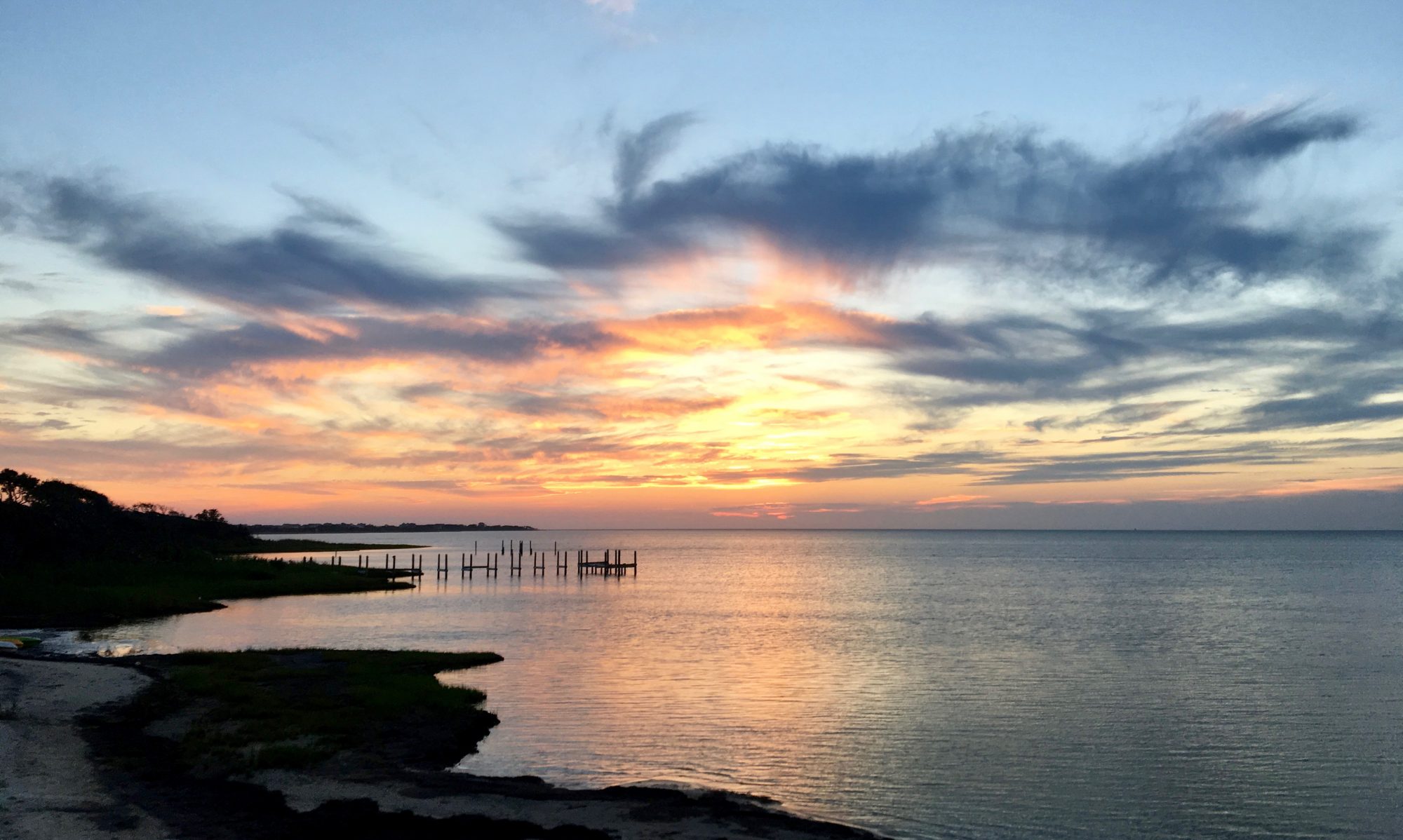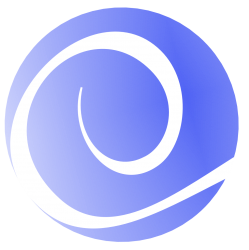By Kasey R. Jacobs, TCS Communications Chair, Partnership and Communications Coordinator for the Caribbean Landscape Conservation Cooperative
Editors’ Note: This story is the third contribution to the TCS Storm Stories series.
Three women sat slightly sweating with the electricity out, wind pounding the hurricane shutters. Each a daughter from a different generation – Generation Y, Baby Boomer, and one born on the cusp of the Greatest and Silent Generations.
Up until that point our time in darkness waiting for Hurricane Matthew had been like a snow day. Cozy together time with coffee, playing cards, watching the local weather man give updates, and reading books aloud to one another. After two wobbles that took Matthew away from our location, we were relieved to no longer have to think about extreme flooding or whether or not the house could stand up to category 4 winds.
But while others in our area probably went to bed after the second wobble, we stayed up.
One of us had a high stake in the electricity going out.
My 87-year old grandmother, Rae Dolores DePalma (b. 1929 – d. 2017), a long-time sufferer of COPD and congestive heart failure, spent the prior five years transitioning from needing oxygen part of the day, to most of the day, to all of the day. In October 2016, ten minutes off the oxygen could plummet her blood oxygen levels to 50% oxygen saturation – a critical level. Or as one paramedic told us so crudely, “I’ve seen corpses with oxygen levels higher than that.” My mother and I needed to stand guard in case the electricity cut out. Even with the electricity on, we would check her levels using an oximeter at least hourly.

Sure enough, not long after Hurricane Matthew’s second wobble, the TV and lights flickered and we were in pitch darkness. We immediately put our contingency protocol into action.
The oxygen concentrator my grandmother depended on, and that we affectionately called O2-D2, couldn’t operate without electricity. Little green tanks were Plan B. Each could last four hours and we had five tanks. If the electricity would be off longer than 20 hours we would have to switch to the large hurricane-supply tank of oxygen in the garage that could last 48 hours. If the electricity stayed off longer than that, Plan C was arranging a ride with EMS to the hospital. Past storms in the area had left my family without electricity for ten or more days. The closest hospital was also in the next town over and in a flood zone, which created additional transportation challenges should the roads be impassable.
At the start of the hurricane season I had made inquiries into the capacity of our area for dealing with special needs patients during hurricanes. I had learned the local senior center was not equipped to allow oxygen-dependent persons into the shelters. And I had been told the County did not have an official special needs shelter.
For us, the only option would be the hospital located in the flood-zone. The hospital administrator assured me the generators in the hospital would be safe as they are located on high ground, not in parking lots, which is sometimes the case for essential facilities in flood-prone areas. (I discovered this to be the case while mentoring a group of Worcester Polytechnic Institute students conducting a critical infrastructure analysis in San Juan’s coastal zone.)
Why didn’t we evacuate?
During the hurricane, my mother and I would occasionally speak in whispers so as to not to alarm my grandmother that we should have evacuated. I was witnessing risk perception study results come to life. A couple of times prior to the hurricane, I had presented to my family the reasons I felt we should evacuate. I used flood map tools from the county and explained how stormwater infrastructure functions and the uncertainties in flood modeling. Our house is located one mile from the evacuation zone and in the middle of a series of man-made retention ponds and rivers. Our neighbors were claiming that past hurricanes had flooded the streets but none of the floods went up to the doors. To me this meant a Category 4 certainly could have inundated our houses given the right conditions (storm surge direction and height combined with high tide, heavier than expected rainfall, debris clogged sewers, and overtaxed storm water retention basins). We also had family on the west coast of Florida so, unlike many others, we wouldn’t have to pay for a hotel.
The concern written all over the faces of the local horsewomen of the city had me even more worried in the days leading up to Hurricane Matthew’s arrival. They had been through this time and time again, yet this time seemed different. My sister and her friends spent hours preparing a concrete barn of a friend for extra horses, making sure no flying debris could injure a horse. Those who had non-concrete barns often relocate their horses to concrete barns during storms, if they don’t evacuate to Florida’s west coast. At the concrete barn, my sister and her friends boarded up the stalls, secured feed and water, and transported horses from other unfortified barns.
In the end, I was out-voted. It was considered to be too much of a production to transport all three of us plus two dogs to the west coast with a car full of oxygen tanks, the concentrator, wheelchair and walker, only to pack it all up again and return a few days later. With most of the coast evacuating we could be stuck in traffic for so long the green tanks would run out before we got there. Plus, in and out of cars for short trips, let alone long trips, was really taxing on my grandmother and the anxiety and stress was not good for her heart. It was already working overtime because of her COPD.
During the storm, before the two wobbles, we realized the big risk we took in the decision to stay. I couldn’t help but think of those studies that discuss how even with information (in this case, coastal scientist family member sitting there in the living room with maps and hurricane data discussing the risks) people will tend to listen to neighbors, local weather men or sheriffs before the scientists. Because we were not directly in the evacuation zone these public figures were not focusing their recommendations for our area. They repeatedly pleaded with residents and businesses in evacuation zones to evacuate. The Governor of Florida even went so far as saying, “If you stay, you will die.” I called the County emergency hotline to get advice for our area but they would not give me a specific recommendation, most likely for liability reasons. They did, however, reiterate the information I already knew and discussed the different scenarios. It was nice to have that peer review of what I was telling my family, but because we were one mile outside the evacuation zone we were left to determine our risk independently.
Our neighbors were all saying before the storm that the last hurricane wasn’t so bad. In my family we have been through so many other storms some felt we could get through anything. Days after the storm it was like memories were jogged and new stories came up about bad damage and flooding from past hurricanes.
The Human Factor
In the hours leading up to the storm while getting the shutters closed-up, and all the supplies out of the hurricane supply cabinet, including our low-sodium snack options for my grandmother, I started getting really nervous. Thinking of all the possible scenarios, and mostly the worst case scenarios, I started making an emergency bag for us and my grandmother in case we had to rush to the hospital or be rescued. The bag had an emergency whistle and skin suit in case the flooding got to be really bad, first aid kit, extra Depends, change of clothes, money, identification and insurance cards, water, snacks, waterproof bag for cell phone. My mother thought I was nuts, but I just kept thinking of all the possible scenarios and wanting to be prepared for each.
I am so thankful we never had to use the emergency bags. But I remember my thoughts as I was packing them. “This is ridiculous, why didn’t we evacuate?” “Maybe we should have put sand bags at the front door, garage door, and back door” “What if the river behind the house floods and comes in through the back?” “What if the ambulance can’t get through?” “What is my family thinking?”
I have focused on disaster risk reduction for the past nine years, in various roles in school and professionally. I have researched and written about vulnerable populations and have facilitated teams to develop recommendations from scientists, planners, and municipalities to improve conditions along the coasts and enhance resilience. In West Sumatra, Indonesia I helped during tsunami and earthquake trainings of small businesses along the coasts. But going through an acute event with an elderly, oxygen-dependent loved one, opened my eyes to the real challenges individuals and communities face in implementing recommendations. It is one thing to study and synthesize information from subject matter experts, maps, and models or even to go through hurricanes yourself; it is quite another thing entirely to go through a major hurricane as a caregiver.
I think this “human factor” is something I was failing to consider while I was disgruntled with my family members for making what I thought to be a poor decision.
But more than that I think it is something we do not consider enough in disaster risk reduction and climate adaptation work as professionals. We look at vulnerable populations as statistics and identify measurable barriers that prevent them from taking safety precautions to protect life and property. While we are far from cold to the realities and challenges of these populations, we do have the tendency to down-play the human side to the choices people make when it comes to their health and safety of themselves and loved ones.
Academically, we like to state what people should do or should not do in post-storm event analyses, and describe the poor choices that are made. When extending this work to climate change adaptation, this tendency can be more pronounced in that within community of practice circles we often express disbelief at the decisions made by individuals, businesses, and governments in siting infrastructure, removing natural protective features, or choosing to live in high-hazard areas rather than supporting planned retreat. We tend to think that if they just had the information or if the information was presented better they would choose differently. I don’t think this is necessarily the case. Vulnerable populations need the information to ensure they are making decisions with all the available information, but we need to recognize that affected individuals and communities may still make decisions we disagree with because they weigh certain factors differently than we do as outsiders. When you don’t have a direct stake in the matter, it is not so easy to understand why certain decisions get made the way they do.
In the case of Hurricane Matthew and my grandmother, her discomfort and anxiety and preference to be at home during an emergency rather than in the middle of a gridlocked highway during an emergency, was weighed more heavily than flood and wind risk.
This reminds me of my favorite scene in the movie Sully, about the Miracle on the Hudson. An investigation was launched around the decision made by the Captain to do an emergency landing in the Hudson River instead of trying to make it back to the runway after a flock of birds flew through the engines. The flight simulators showed it was possible to make it back to the runway. But the simulations didn’t consider the real-life response time of a pilot in that situation. Once they did, the simulation results supported the decision made. Tom Hanks, playing Captain Chesley ‘Sully’ Sullenberger, replies in the movie, “We’ve all heard about the computer simulations, and now we are watching actual sims, but I can’t quite believe you still have not taken into account the human factor.”
When the electricity was restored and Hurricane Matthew’s winds were far away, my mother and I were finally able to stop holding our own breaths while trying to save my grandmother’s. I don’t think I will ever look at risk perception or special needs population work in the same way again.
How to Prepare if You are an Older Adult or a Caregiver
A number of organizations and companies have great advice and check-lists for hurricane preparation if you are a caregiver or if you are a senior yourself:
- For seniors by seniors: American Red Cross
- For people with lung disease: net
- Elderly special needs plans to be ready for a disaster: FEMA
- Personal preparedness for older adults and their caregivers: CDC
Editors’ Note: This story is the third contribution to the TCS Storm Stories series. Due to recent hazards events, Hurricane Matthew and the Baton Rouge Flooding, we want to know how it is affecting you personally and in your work. There’s been lots of attention by national media outlets like NPR story Hurricane Matthew Took a Big Bite Out of Southeastern States’ Beaches but since we are a society of coastal professionals for coastal professions we think we should do our own reporting. Sharing experiences and lessons within our network is what we do best. Submit yours today!



